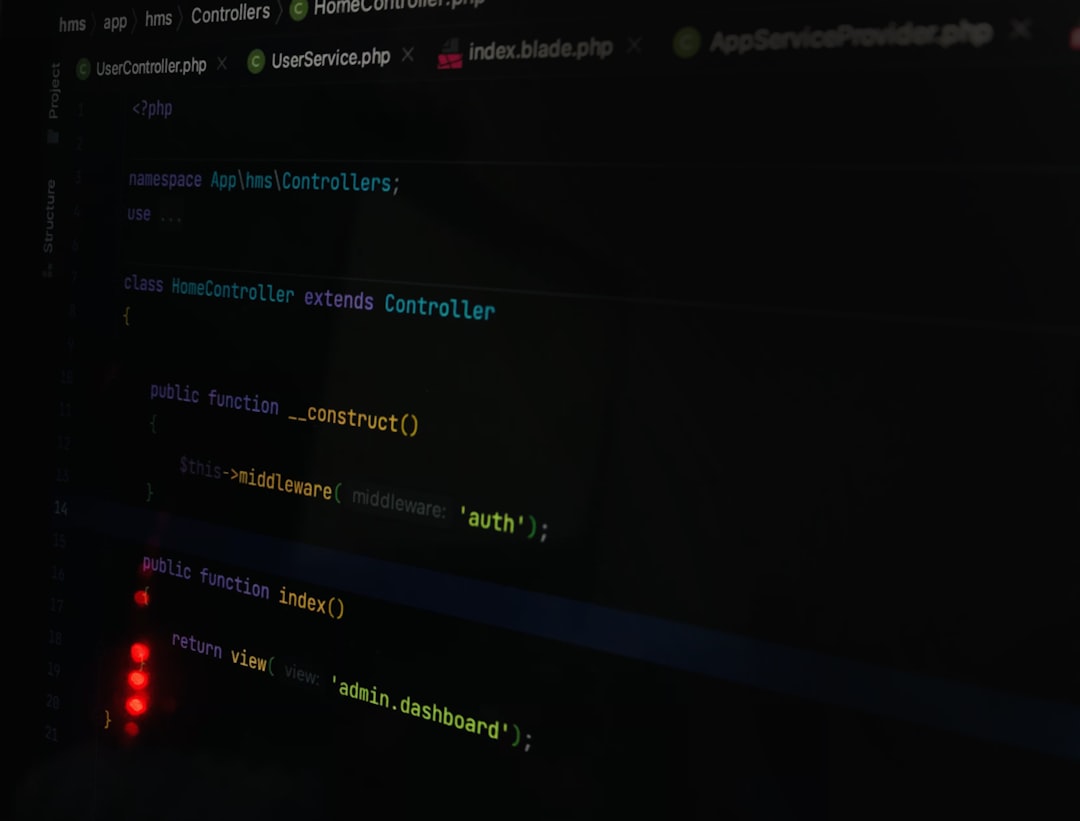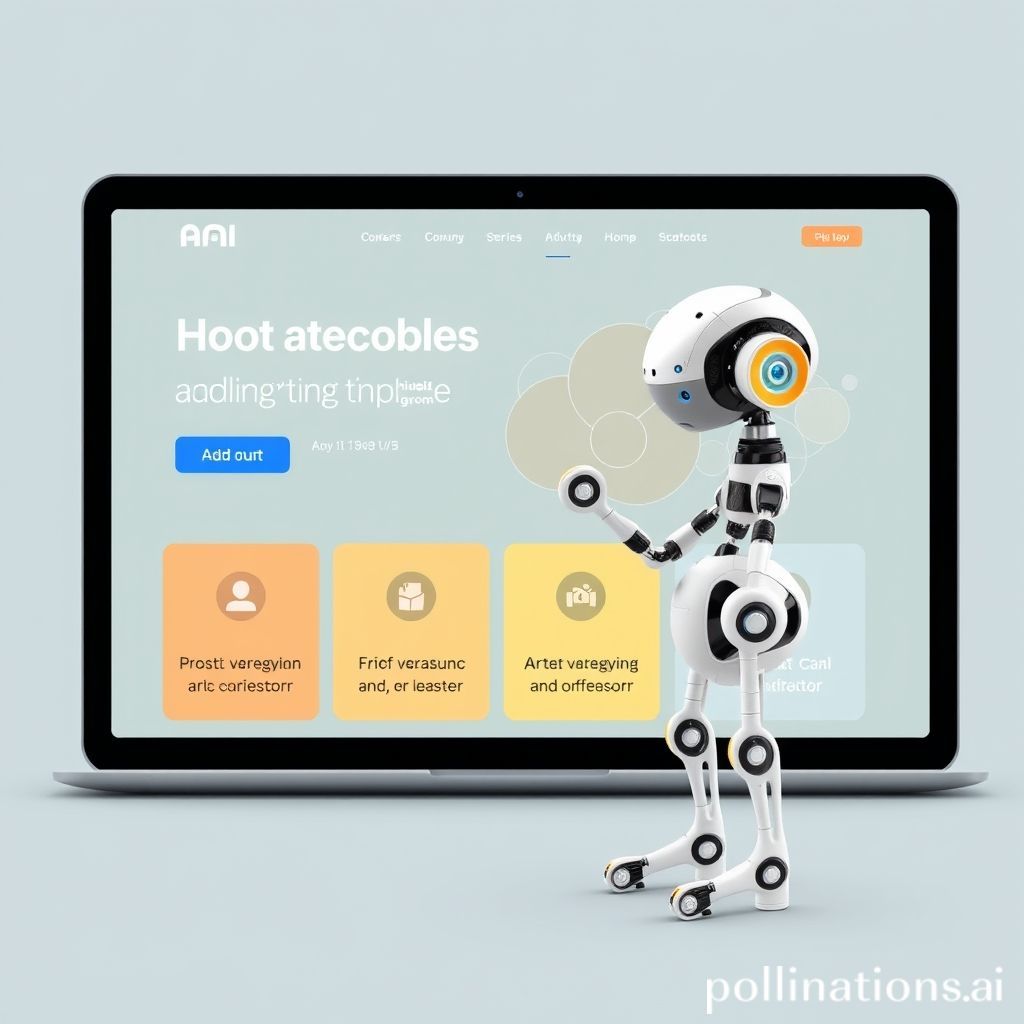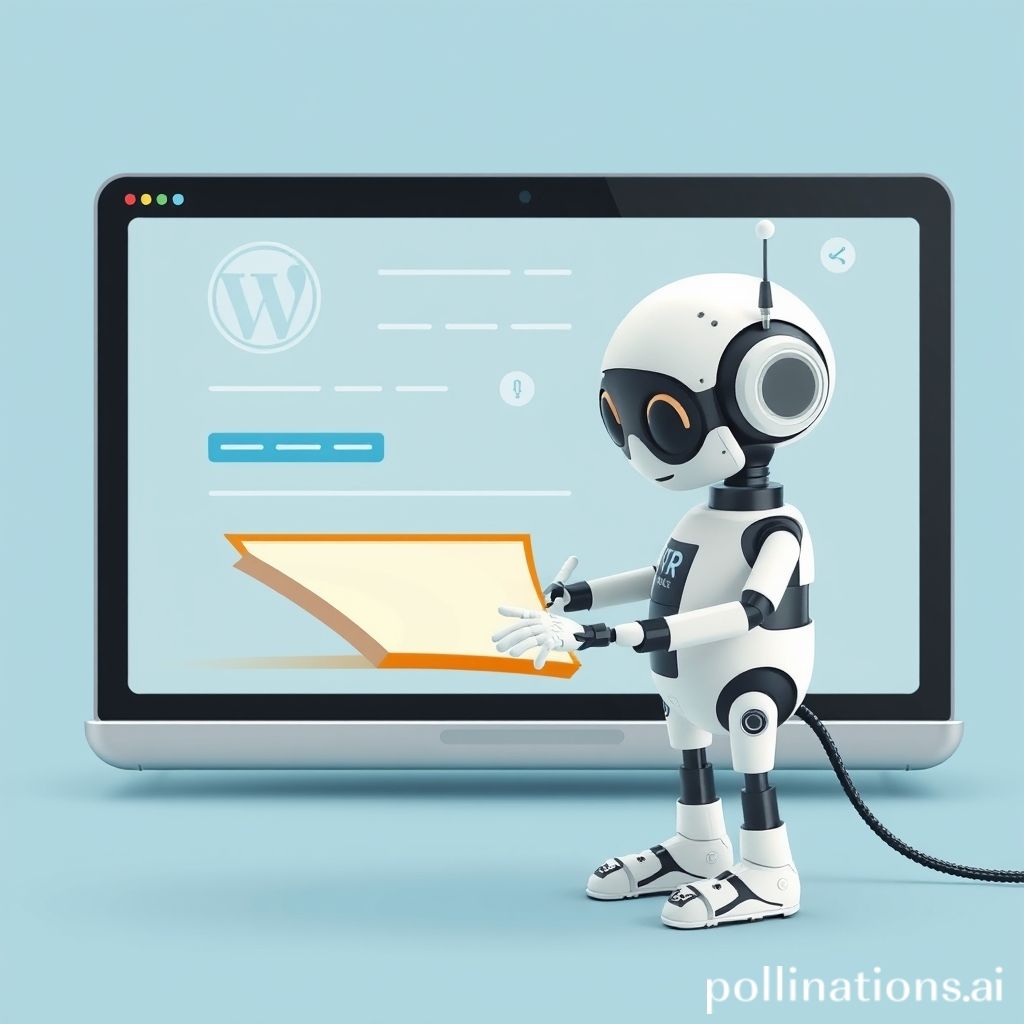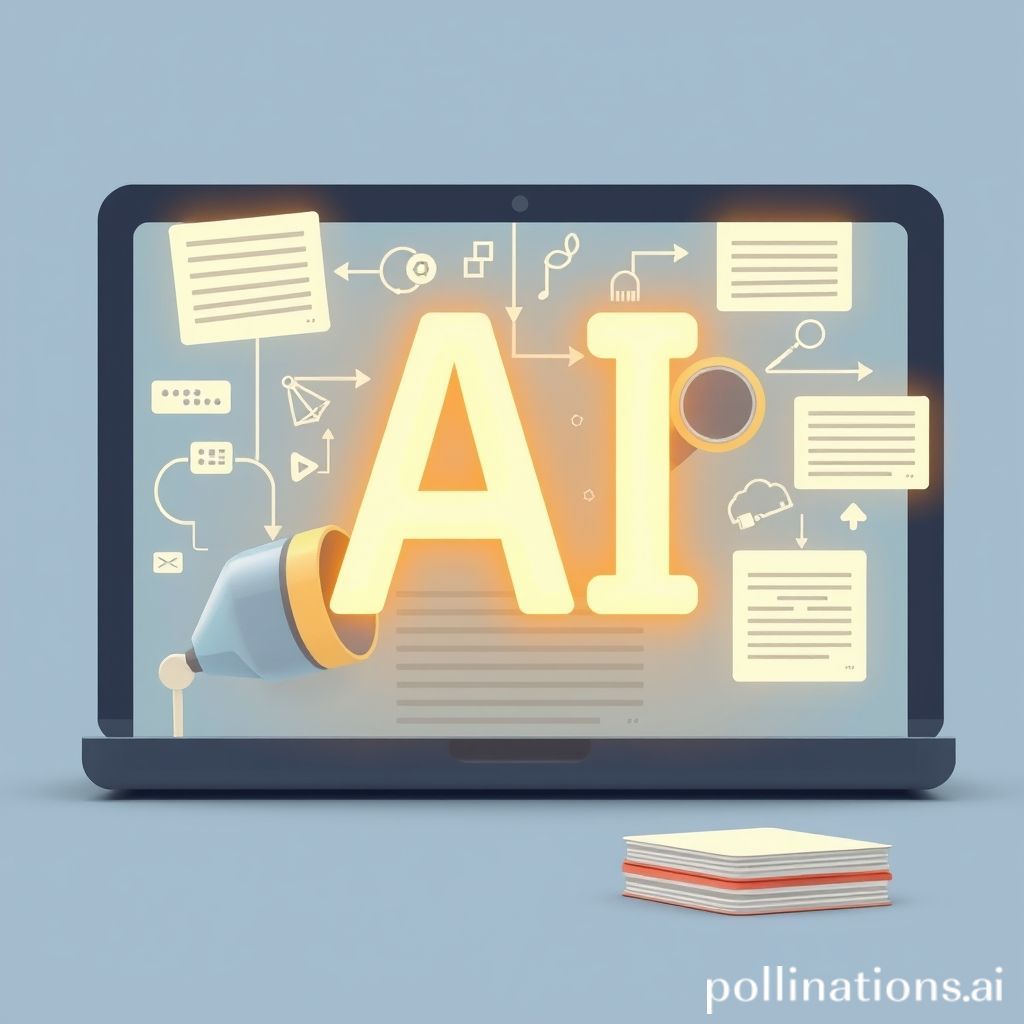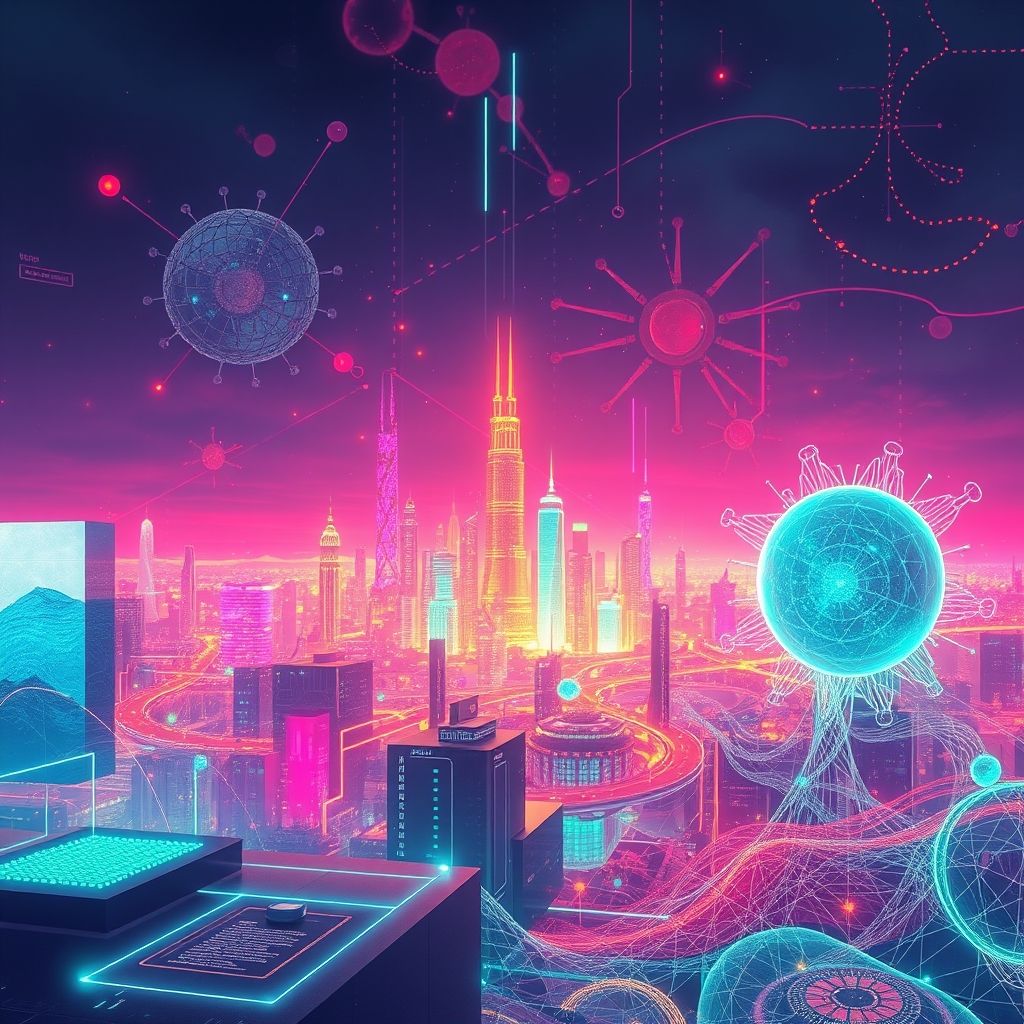Table of Contents
- Introduction
- Exploring the role of AI in content creation: How far have we come?
- The rise of AI-powered plugins and SaaS tools: Revolutionizing WordPress and beyond
- AI content generators vs. human writers: A battle of creativity and originality
- Automated workflows and AI-generated content: Streamlining the writing process for efficiency
- Harnessing GPT-based AI writers for auto-blogging and content automation
- The art of AI copywriting: Can a paragraph generator produce engaging content?
- AI-powered tools for optimizing and rewriting content: Enhancing quality and cohesion
- AI’s limitations in replicating human creativity: Why the pen might still be mightier than the algorithm
- Conclusion
- Frequently Asked Questions
Introduction
In an era where technology advances at a breakneck pace, the realm of writing—one of humanity’s oldest and most cherished forms of expression—finds itself at a crossroads. Can artificial intelligence, with its rapidly evolving capabilities, ever truly replace the creative mind behind storytelling? As innovative algorithms like GPT-3 and DALL-E capture headlines for their uncanny ability to produce human-like prose and vivid imagery, a pressing question emerges: what does the future hold for creative writers?
As we embark on this exploration of AI’s potential to reshape the way tales are woven, we invite you to delve into the heart of the matter. Will the art of storytelling become a domain shared between man and machine, or will AI emerge as a formidable competitor, capable of conjuring narratives with the same depth and emotion as its human counterparts? Join us on this journey as we uncover the possibilities and potential pitfalls of a future where technology and creativity intersect in unprecedented ways.
Exploring the role of AI in content creation: How far have we come?
Once upon a digital dawn, AI tiptoed into the world of content creation, promising to turn the tide and change the game. Wow, didn’t it stir the pot! Remember, not too long ago, when typewriters clacked, stories flowed from a writer’s soul? Well, now algorithms are eager to weave tales from data, creating a modern symphony of words like bees in the beauty of spring.
With AI, efficiency is the name of the game. From generating catchy headlines that snap, crackle, and pop, to drafting articles faster than you can say ‘Jack Robinson,’ AI’s dance in the content arena is nothing short of a spectacle. Yet, as the digital quill scratches its metallic surface, one must ponder the heart behind the prose. Where’s the humor, the heartache, the humanity?
Isn’t it ironic, though, how the mechanical maestro seeks to master the art born from human experience? The metaphorical pen now finds itself at a crossroads. While AI brings a treasure trove of tools to the creative table, it can’t quite quench the thirst for authentic human touch. And there, hovering on the horizon, lies the hope and hum of collaboration, not competition.
The rise of AI-powered plugins and SaaS tools: Revolutionizing WordPress and beyond
Oh, how the times are a-changin’! AI-powered plugins and SaaS tools are springing up like daisies after the rain, fundamentally transforming platforms like WordPress and beyond. Just think of them as the new artisans in a digital renaissance era, brushing up our online canvases with strokes of genius. But here’s the kicker: they don’t need coffee breaks or vacations!
Imagine a world where your website runs smoother than a hot knife through butter, thanks to these AI tools. They’re like little digital elves working tirelessly behind the scenes. They optimize content, fine-tune SEO, and even fend off cyber-nasties—and they do it all with a kind of poetic justice. With AI’s rising prominence, an ordinary blog can transform into a digital metropolis overnight, buzzing with traffic like a beehive mid-summer.
Remember the time when updating a site felt like watching paint dry? Now, it’s like turning a page in an entirely gripping novel, with AI predicting what’s beneficial before we even finish the chapter. So, whether you’re a tech guru or a curious cat, these AI marvels are here to revolutionize the creative digital world in a way we’d only dreamed was possible before. Exciting, isn’t it?
AI content generators vs. human writers: A battle of creativity and originality
Picture this: on one side, you’ve got AI content generators, those shiny new gadgets boasting the power of a supercomputer’s brain, churning out lines faster than you can say “technology takeover.” On the other, human writers, with ink-stained fingers and hearts that beat to the rhythm of a story. Both are contenders in the arena of creativity, vying for the crown of originality.
Take for instance the tale of a seasoned journalist, who once bet a buddy he’d write a riveting article in the time it took his friend’s AI to blink out a piece. Oh, the irony! The AI played its cards with precision, throwing in statistics and structured prose, yet it missed the mark where human warmth and whimsy lived. Meanwhile, the journalist’s words flowed like a river, painting pictures alive with emotion, imagery snapping, crackling, popping like a bonfire.
Ah, the art of storytelling! While AI generates content faster than you can say “Jack Robinson,” the essence of human experience often hides in the nooks and crannies that machines can’t quite grasp. So, as this tug-of-war continues, we find ourselves wondering if the soul of writing may forever elude a circuit board’s grasp.
Automated workflows and AI-generated content: Streamlining the writing process for efficiency
Imagine a bustling kitchen where chefs, deftly wielding their tools, concoct culinary masterpieces. Now, picture a well-oiled robotic chef joining the fray, lending a mechanical hand with precision and speed. That’s what automated workflows and AI-generated content bring to the writing table! It’s not just about swapping ink-stained quills for flashy algorithms but creating a dance between man and machine to boost productivity and efficiency.
Oh, the wonders of AI! It can churn out drafts quicker than a cat can blink an eye, handling repetitive tasks like laying out formatting breadcrumbs. For businesses, this is a goldmine, cutting the clutter and letting humans dive deeper into creativity. Bob from marketing used to spend hours fiddling with reports—he’s now channeling his inner Hemingway, crafting stories with heart. Meanwhile, AI keeps the mundane at bay, tirelessly working in the background.
However, fears often whisper tales of AI taking over like a plot twist nobody saw coming. Yet, it’s more of a worthy sidekick, smoothing rough edges and sharpening the focus. That said, it doesn’t spin tales of romance or breathes life into characters quite like a human’s touch. So, here’s to finding harmony in this creative symphony, embracing the hum of technology without losing the magic of human imagination!
Harnessing GPT-based AI writers for auto-blogging and content automation
Think about using AI in writing like letting your trusty sidekick take the reins for a while. With GPT-based AI writers, auto-blogging isn’t just a dream—it’s a reality. They’re the engines humming under the hood of content creation, where you can almost hear the clattering keys making music, weaving words together. While it might seem like AI is a robot wearing a writer’s hat, well, it sorta is, but it’s got the knack for picking up patterns just like a writer sipping coffee and pondering life’s mysteries.
Suddenly, with a dash of digital magic, blog posts pop up like daisies in spring. But, here’s the kicker: AI won’t replace the twinkle in a writer’s eye or the heart in their storytelling. Imagine a bustling city trying to function without traffic signals—it’d be chaos, right? So, as irony would have it, AI brings order to the content jungle.
This tech-savvy tool can churn out articles, spruce up SEO strategies, and even predict trends faster than a caffeinated squirrel. It’s like having an ace up your sleeve, adding a sprinkle of stardust to the often tedious task of content creation, making the whole process less like a marathon and more like a walk in the park.
The art of AI copywriting: Can a paragraph generator produce engaging content?
Once upon a time, in the bustling world of words and wonders, there emerged a new contender: AI copywriting. Now, can an automated chum really scribble something that tickles our fancy or stirs the heart? Oh, the quirkiness of it all! It’s like watching a robot trying to dance the tango—fascinating, sure, but does it capture the passion? AI, with its algorithms and data crunching, may craft sentences that are smoother than a baby’s bottom, yet, it often lacks the jolt of creativity only a human touch can sprinkle. Consider this, my dear reader: a machine-generated blurb can churn out content quicker than you can say ‘jackrabbit,’ but does it know the sweet nostalgia of a summer’s night or the biting irony of life’s little twists? Hmm, perhaps not. In the realm of metaphorical musings, AI holds promise, no doubt. Yet, in the pursuit of prose that delights and devours, it’s like comparing a lightning bug to a lightning bolt. Both have their charm, but only one truly lights up the sky. So, here we ponder, ever so curiously: can our mechanical mates truly captivate or are they destined to mimic without magic?
AI-powered tools for optimizing and rewriting content: Enhancing quality and cohesion
In the bustling world of content creation, AI-powered tools have swooped in like a superhero without a cape, ready to lend a helping hand. Ah, the wonders they bring! These digital maestros can optimize and rewrite content, making it as snug as a bug in a rug. You see, when it comes to tightening up those wayward sentences and injecting a fresh dose of cohesion, these tools are just the ticket. With a touch, they’re able to polish content, ensuring everything flows like a river winding through a lush valley.
Picture this, a writer staring at a sea of words, feeling like a deer caught in the headlights. Enter AI with its uncanny ability to spot sagging narratives and flabby phrases, transforming them into something newfangled and punchy. It’s like giving an old jalopy a shiny new coat of paint and a turbo engine. This process not only enhances quality but also breathes life into stories that otherwise might have gathered dust. It’s not about replacing the human touch but enhancing it, just like adding a sprinkle of magic to a well-loved recipe.
AI’s limitations in replicating human creativity: Why the pen might still be mightier than the algorithm
It’s raining cats and dogs in the world of technology, isn’t it? With AI marching in like an unstoppable juggernaut, some folks wonder if creative writers might be outgunned. But here’s the kicker: AI’s got its quirks. While it’s true that algorithms can crunch numbers like nobody’s business, when it comes to the art of storytelling, they sometimes miss the boat. Picture a world where every piece of writing is as predictable as a Monday morning alarm clock—yawn! That’s what you’d get if we relied solely on AI for creativity.
Imagine, for a moment, the warmth of a well-worn book, its pages flipping with a gentle swoosh. Flights of fancy and streams of consciousness that flow from a writer’s pen offer a human touch that’s hard to mimic. Oh sure, AI can churn out text that mimics the masters, but can it truly capture the heart’s whispers or the soul’s shadows? There’s a symbolic dance in human storytelling, a kind of poetic painting that even the most advanced algorithms find tough to replicate.
So, as the tale goes, the pen is still mightier, filled with irony and nuance that AI can only aspire to grasp. And that’s the gospel truth, for now!
Conclusion
As we look towards the future of storytelling, it becomes clear that while AI has its limitations, it also opens up a realm of possibilities in content creation. By harnessing tools like WPHorde and other AI-powered platforms, writers and creators can enhance their efficiency and competitiveness in the digital space. Those who fail to adapt and integrate these innovative technologies risk falling behind in a rapidly evolving landscape. Embrace the synergy of human creativity and AI advancements to stay ahead. Start exploring the potential of WPHorde today and ensure you’re not left in the dust!

